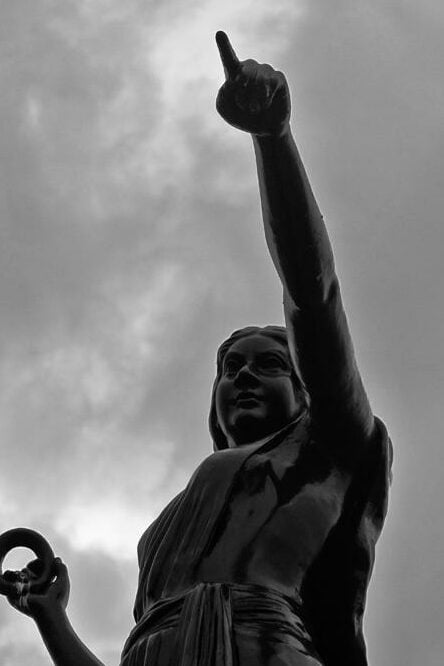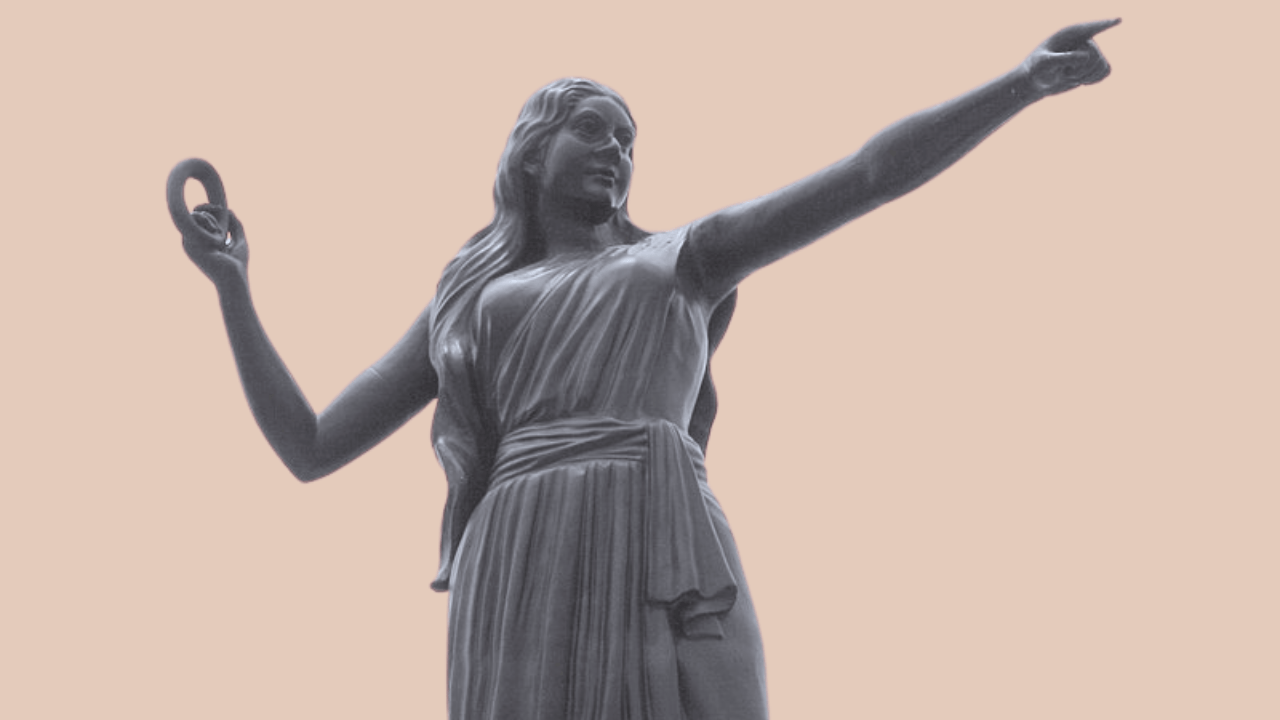In a patriarchal society, women are portrayed as either domesticated, promiscuous, or divine, as evident from the representation of women in Cilappatikaram. A Tamil epic written by Ilango Adigal, Cilappatikaram is a fantastic example of Sangam poetry that dates back to the 5th century AD.
The epic revolves around the lives of Kovalan, Kannagi, and Matavi. Kovalan marries Kannagi after which he leaves her for Matavi. After ironically suspecting infidelity from Matavi, he returns to his former wife and goes to Madurai to earn money, where he gets falsely framed and executed for thievery. This is followed by the unveiling of Kannagi’s wrath and her act of tearing her breast and throwing it on the kingdom to burn it. In the end, Kannagi is deified and worshipped as the goddess of chastity- Pattini.
One of the most remarkable things in the epic is the feminine dichotomy between its female characters and the differential treatment of Kannagi and Matavi. Kannagi has been portrayed as a chaste and virtuous wife and Matavi, on the other hand, as a dancing woman devoid of “honour.”
Kannagi as the ‘ideal‘ wife
Kannagi’s character paints the perfect picture of how a woman is “supposed” to be. Being constricted to patriarchal gender roles, she is represented as the “ideal” wife who fulfils her duties as a woman in the domestic sphere. Her character as a passive and voiceless woman who suffers in silence is the perfect example of internalised misogyny. Kannagi is also objectified when the text focuses upon her hair, waist, and breasts, and praises her for her physical beauty.

Her devotion towards Kovalan makes her existence centered upon her husband. After he cheats on her, Kannagi waits for the infidel to come back and embraces him with open arms. Because of these characteristics, her femininity is praised in the text.
Kannagi’s character witnesses transformations, but only those which are within the boundaries of patriarchy. Her widowhood turns her into a powerful woman with wrath and anger from a coy lady. Her sexual energy and preserved chastity get channelised into wrenching off her breast and burning the kingdom with it. This forwards the idea that chastity arms a woman with heavenly power.
It is interesting to note how Kannagi is valorised for going out in the public space to prove his husband’s innocence and burn the city with her rage, unlike women who work in the public realm. This conveys that her movement from the domestic space to the kingdom is only sanctioned because it is an act taking place within the shackles of patriarchy. Her wrath is legitimised by patriarchy as it is born out of chastity, and her actions are in sync with her role as a wife in Cilappatikaram. It shows that a woman’s anger is valid only if it is for the sake of her husband.
Towards the end of the text, Kannagi is deified into Goddess Pattini. Her apotheosis is ironically not because of something related to her, but because of her blind commitment towards her husband. She is placed on a pedestal and deified because of being a “good” wife according to patriarchal norms.
Kannagi’s deification takes away the human element from her. She becomes a goddess at the cost of her human identity. Moreover, she is not deified solely because of her devotion, but is used by another man- the King- to establish his rule. He institutionalises her to legitimise his authority.
The idea of chastity: the prime distinguisher between Kannagi and Matavi
Chastity refers to a restraint of all impulses considered to be “immoral” and “immodest.” By portraying it as a woman’s armour, chastity as a concept is fed to women to fool them into believing that it is a quality. This idea, which lies at the heart of Brahmanical patriarchy, controls a woman’s body and sexuality.
The idea of virtue in women is also connected to a woman’s sexual relations, devotion to her husband, and success at fulfilling patriarchal duties. It is chastity that makes up for one of the most significant differences between Kannagi and Matavi.
Matavi as the singer of her own song
A highly accomplished dancer at the court, Matavi is a master of the arts in Cilappatikaram. Along with having access to sophisticated language, she is skilled in music and dance. It is important to note that courtesans in the era were not equal to prostitutes.

In the narrative, she puts up a garland of 1,008 gold coins received from the king for sale, the buyer of which would become her husband. Kovalan purchases the garland.
Matavi is a woman with agency and identity. She takes charge of her own life and is the singer of her song. She reciprocates romance and expresses love, unlike stereotypical heroines who are at the receiving end of the man’s sexual desires. At the same time, she also speaks up for herself when she feels Kovalan is cheating on her.
However, being an artist, Matavi is not accepted by patriarchy as the social system is uncomfortable with women who exceed the roles of wife and mother and construct an identity of their own. Being a woman working in the public realm, she is looked down upon because of stereotypical notions attached to women and a lack of acceptance for those who shatter those stereotypes.
It is evident from the text that Matavi does not have the respect and status that Kannagi possesses because she is not “owned” by a man in the institution of matrimony. Society is afraid of such “untamed” women and constantly tries to control them. The meagre presence of Matavi throughout the text speaks volumes about the status of women who are not attached to a man in a patriarchal society.
Matavi’s character also witnesses a transformation, which is from outside patriarchy into patriarchy. From being an artist, the woman goes on to become a nun. This conveys the notion of “modesty” being the ultimate resort for women.
Both Kannagi and Matavi possess femininities that are starkly different from one another. The deliberate differential treatment of the two female characters in Cilappatikaram showcases the norm of revering passive and domesticated women who stay within the shackles of patriarchy and despise those who possess agency and are in control of their own lives.
It also showcases how women are always represented as either “angels of the home,” “loose” women, or divinity in a patriarchal society. Women can either be in the space of their homes as wives and mothers, or in a brothel as a prostitute, or in a temple, deified as a goddess. No other possibilities and arenas are left available to them.
References– Silappadhikaram. Translated by R. Parthasarthy. Edited by B. Mangalam.




